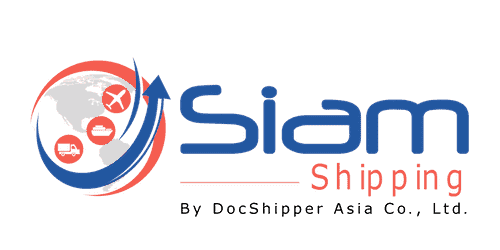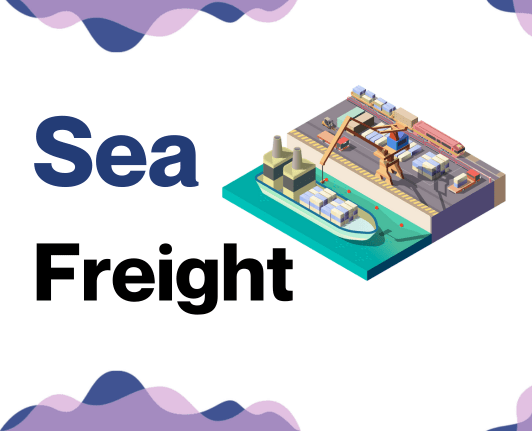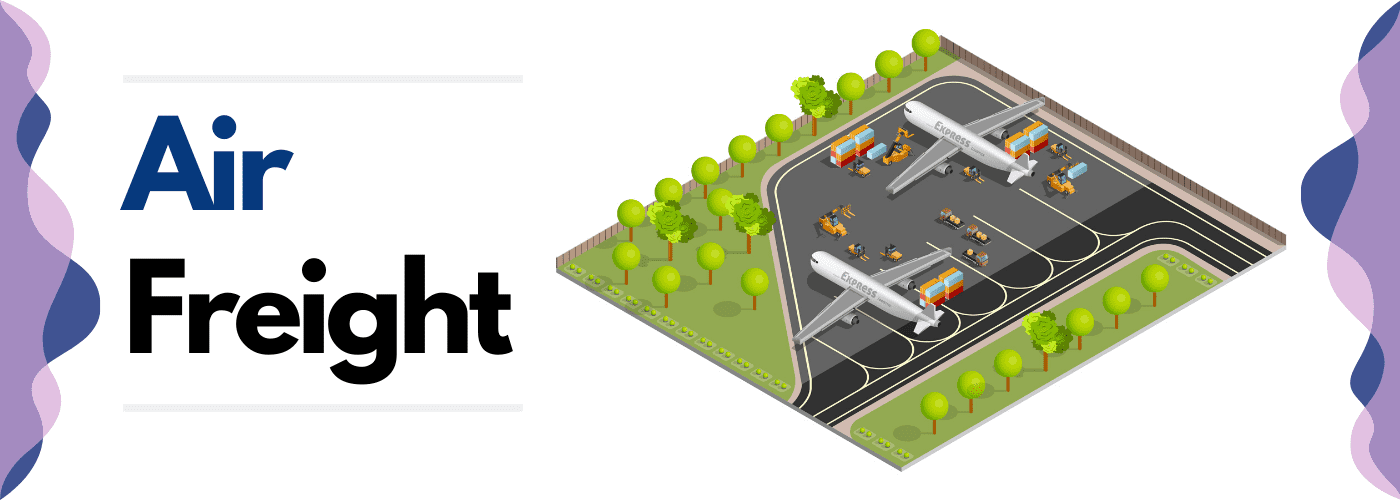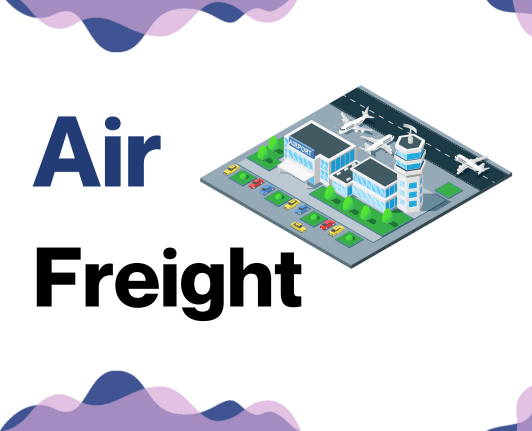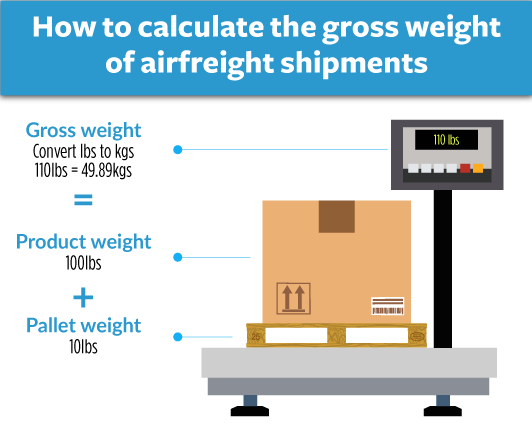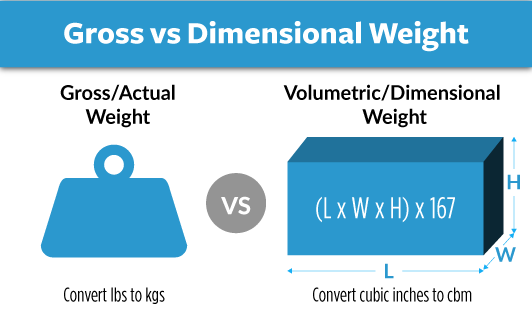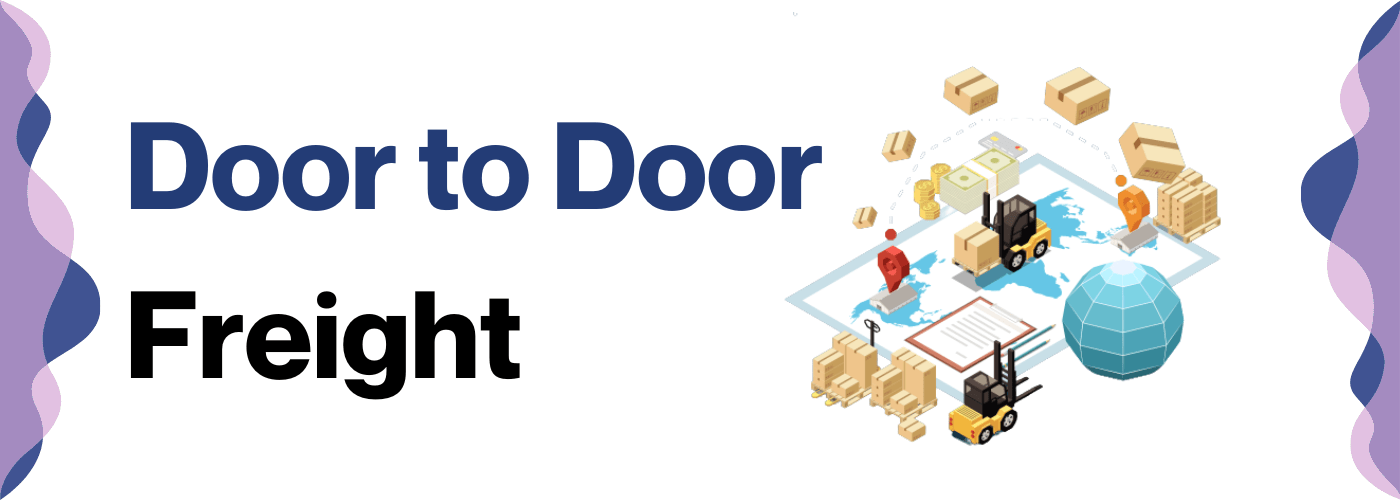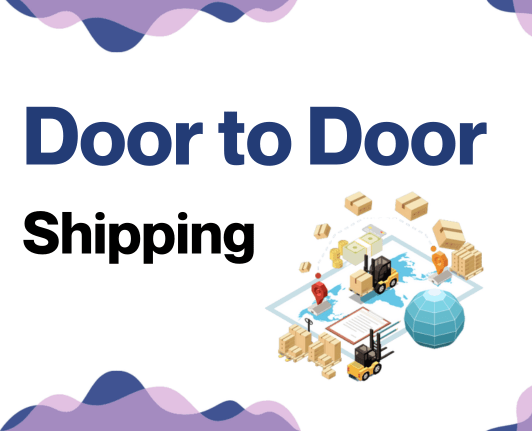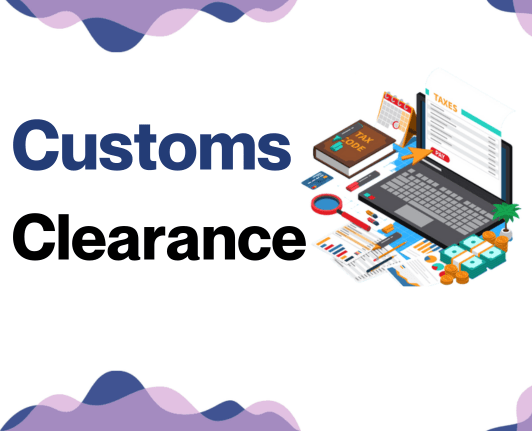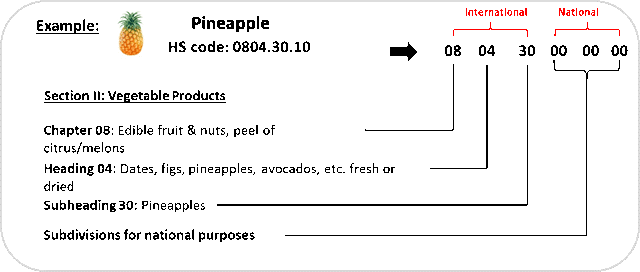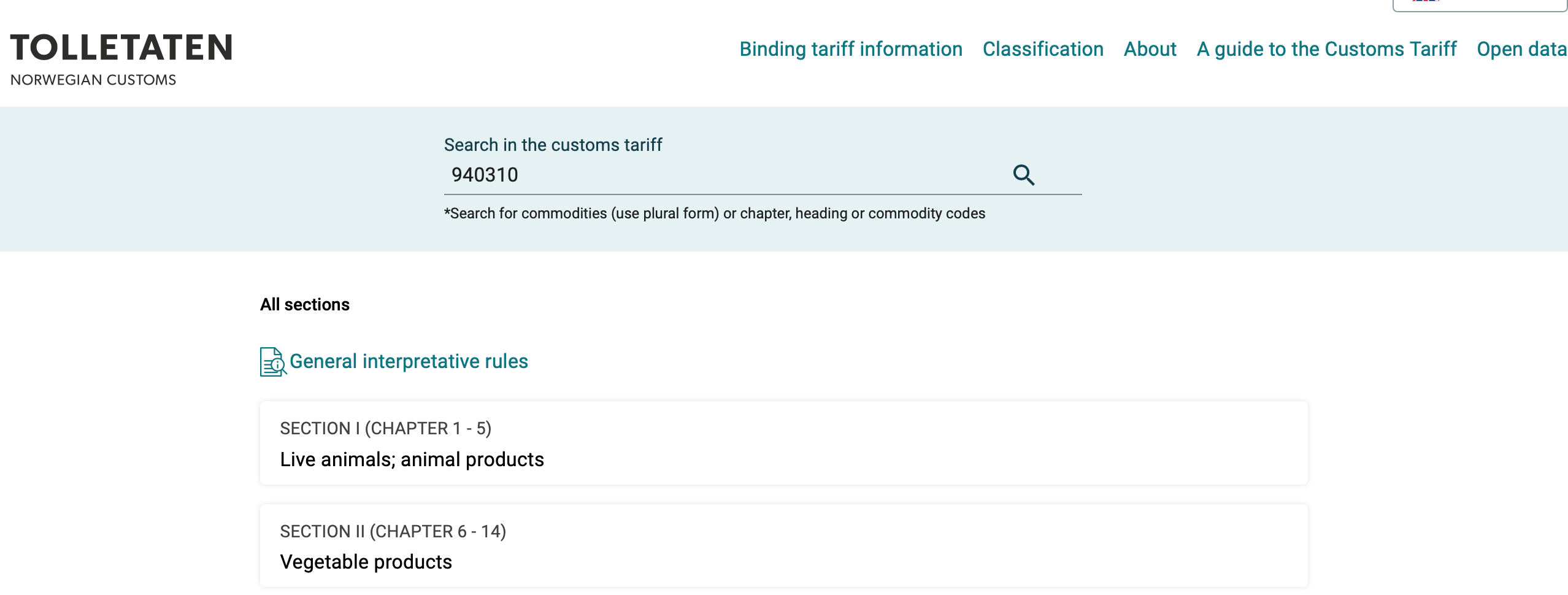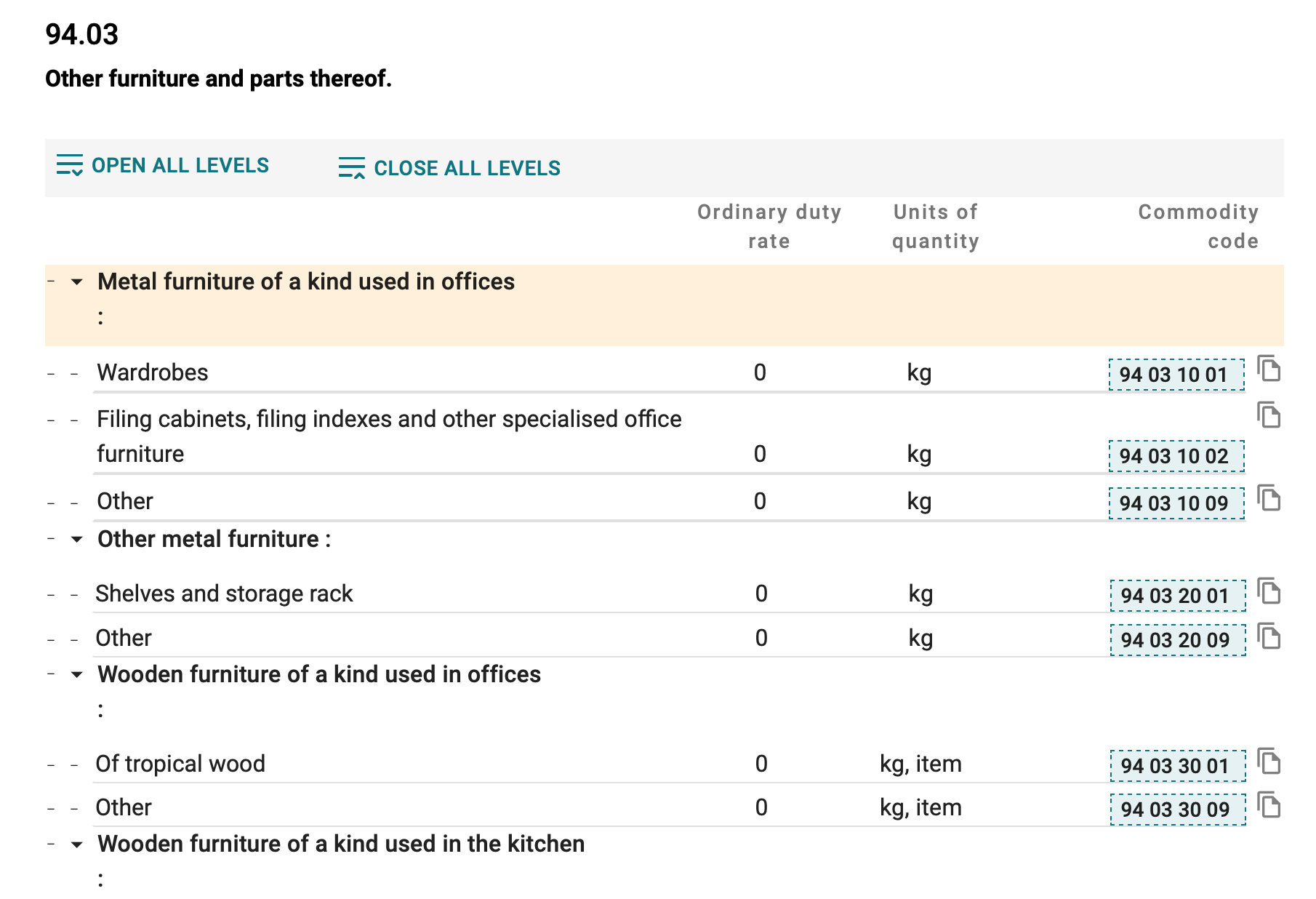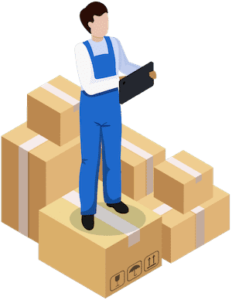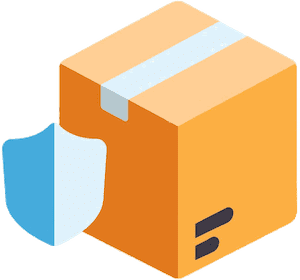Why did the shipping container go to therapy? Because it couldn't handle its freight! But moving goods between Thailand and Norway is no laughing matter, especially when businesses grapple with understanding rates, transit times, and complex customs regulations. This comprehensive guide is designed to iron out these wrinkles, offering insights into various freight options, whether by air, sea, road, or rail, and the peculiarities of the customs clearance process, including duties and taxes.
We provide expert advice tailored to your business needs, seeking to turn what may seem like an insurmountable shipment ordeal into a smooth-sailing operation. If the process still feels overwhelming, let DocShipper handle it for you! We're an international freight forwarder, working relentlessly to ensure every step of your shipping process, from organization to administrative procedures, converts your unique challenges into unequivocal successes.
Which are the different modes of transportation between Thailand and Norway?
Shipping goods from Thailand to Norway is like playing a game of chess, where making smart moves defines your success. Given these countries' distance and obstacles like numerous international borders, some transportation methods can become less practical. Air and sea freight emerge as the frontrunners, each with their own perks. Deciding which one to use relies on your cargo, timeline, and budget. It's about choosing the rook or the knight for the right move, making your shipping journey smooth. Tune in as we dive deeper into these options, helping you make the best shipping decision based on your unique needs.
How can Siam Shipping help?
Thinking about shipping goods from Thailand to Norway? DocShipper can ease the journey. We seamlessly manage each step - from transport organization to customs clearance - ensuring your goods travel safely and quickly. We're here to clarify the complexities of international shipping. No more guesswork - just smooth sailing. Ready to embark? Contact us now and receive a free estimate in less than 24 hours or call our consultants for free guidance.
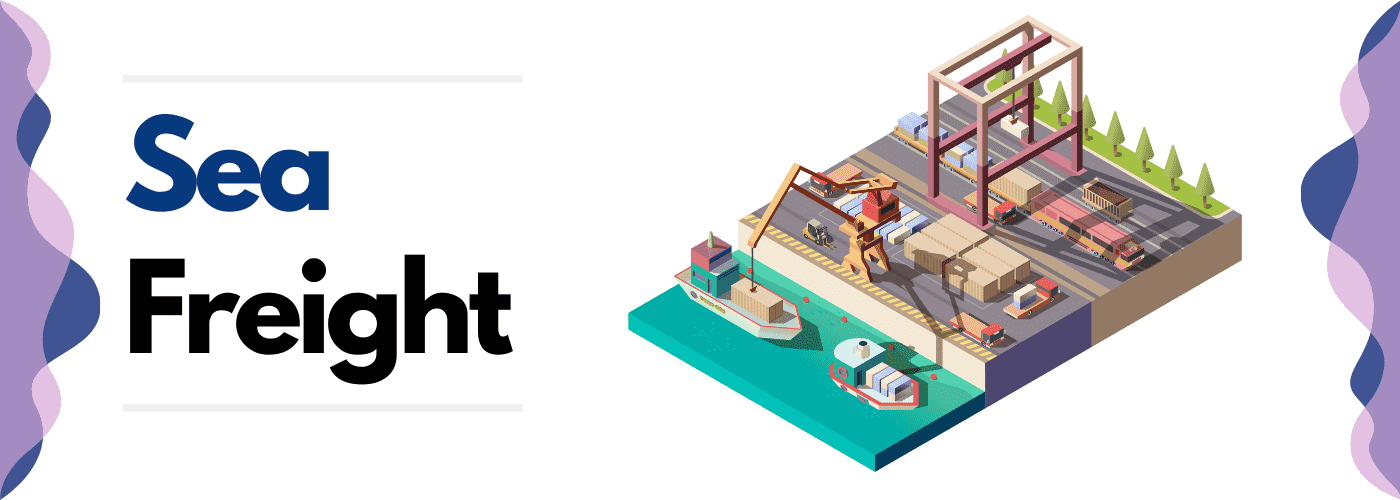
![]()
Siam Shipping Tip: Consider ocean freight if:
- You are shipping large volumes or bulky items, as sea freight offers the most space at a cost-effective rate.
- You're not racing against the clock. Ocean freight takes its sweet time, especially when stacked up against other transport methods.
- Your supply chain is linked up with big-name ports. Think of it as the VIP lane on the maritime superhighway.
Sea freight between Thailand and Norway
Ocean shipping, the lifeline for trade between Thailand and Norway, connects vital industrial hubs through cargo ports such as Laem Chabang and Bangkok in Thailand with Oslo and Bergen in Norway. Established for its cost-effectiveness, sea freight is an optimum choice for shipping large-volume goods, even if it might not be the fastest route.
Yet, this waterway can often feel like uncharted territory for businesses transporting goods between these countries. Mistakes are frequently made – dormancy due to customs miscues, container sizes mismatches, or even documentation errors. It's almost like prepping for a long-haul flight but forgetting your passport or packing the wrong-sized bag. But fear not, underneath these waves lies a clear path. By adhering to well-informed practices and specifications, shipping can become smooth sailing. An in-depth understanding of these guidelines, like the captain's knowledge of star navigation, can steer businesses clear of sinking in this sea of complexities. So, let's drop anchor and dive right into this guide.
Main shipping ports in Thailand
Port of Laem Chabang
Location and Volume: Situated on the Gulf of Thailand, the Port of Laem Chabang stands as the busiest in the country. With a shipping volume exceeding 7.2 million TEU's in 2018, the port plays a critical role in Thailand's international trade.
Key Trading Partners and Strategic Importance: This port is a key trading hub for Thailand, with main trading partners including China, Japan, and the United States. It’s also a notable Automotive Logistics Center in ASEAN, emphasizing its strategic importance for the automotive industry.
Context for Businesses: If your business is in the automotive sector or looking to trade with the above-mentioned countries, partnering with shipping services using the Port of Laem Chabang could fast-track your growth.
Port of Bangkok
Location and Volume: Located on the Chao Phraya River, the Port of Bangkok is the second busiest port in Thailand. It handles a shipping volume of over 1.5 million TEUs, making it an important part of Thailand's commercial activities.
Key Trading Partners and Strategic Importance: The port serves as a vital trade link with major international markets, including Singapore, Hong Kong, and Malaysia. It also plays a significant role in Thailand's rice export industry.
Context for Businesses: If you're operating in the agribusiness sector or eying markets in Southeast Asia, using the Port of Bangkok as a part of your transport strategy might be a smart move.
Port of Map Ta Phut
Location and Volume: Found in Rayong Province on the Gulf of Thailand, the Port of Map Ta Phut is primarily a cargo port that handled 15.5 tons of cargo in 2019, ranking it at the top for bulk cargo throughput.
Key Trading Partners and Strategic Importance: Map Ta Phut port serves a broad network of trading partners, prominently including Japan, South Korea, and China. It is renowned as an important industrial port, loaded with commodities and chemical products.
Context for Businesses: If your firm trades in the chemical products industry or planning to expand operations to the East Asian market, incorporating the Port of Map Ta Phut into your logistics plan could be advantageous.
Port of Songkhla
Location and Volume: Located on the eastern side of the Malay peninsula, the Port of Songkhla mainly focuses on bulk and conventional cargo. The port handled around 5.5 million tonnage in 2018.
Key Trading Partners and Strategic Importance: The port’s main trade partners include countries such as Singapore, Japan, and China. It exerts significant strategic importance due to its connection to the South region of Thailand and neighboring countries including Malaysia and Indonesia.
Context for Businesses: If your business operates in Southern Thailand or is seeking extension in the mentioned countries, the Port of Songkhla may fit neatly into your supply chain strategy.
Port of Sattahip
Location and Volume: Situated in Chonburi Province, the Port of Sattahip is primarily used for military purposes. Nevertheless, the port has seen a rise in commercial use in recent years, handling nearly a million tonnes of cargo annually.
Key Trading Partners and Strategic Importance: Import export activities at this port mainly encompass dealings with neighboring countries such as Vietnam, Cambodia, and Myanmar.
Context for Businesses: If you specialize in military or defense products, or eye expansion within Indochina, considering the Port of Sattahip as a part of your logistical approach might be a game-changer.
Port of Si Racha
Location and Volume: Located in Chonburi Province, the Port of Si Racha is a significant hub for the shipping of vehicles, particularly for Japan's auto exports, handling about 500,000 vehicles annually.
Key Trading Partners and Strategic Importance: A major component of trade at this port is with Japan, making it an essential gear in the automotive import/export industry.
Context for Businesses: If you are in the automotive industry, or intent on tapping into the Japanese automotive market, the Port of Siracha holds potential to streamline your logistics processes.
Remember, a successful shipping strategy requires both understanding various transport routes and careful selection of entry/exit points. These highlighted ports of Thailand mark key nodes in the global shipping network, and they could be potential linchpins for your business operations.
Main shipping ports in Norway
Location and Volume: Situated on the Oslofjord, in eastern Norway, the Port of Oslo is a major gateway for Scandinavian trade, with a shipping volume of over 6 million tons of cargo annually.
Key Trading Partners and Strategic Importance: The port plays a vital role in trade within Europe, servicing countries like Germany, Netherlands, and the UK. The Port of Oslo is Norway's largest cargo port and has specialized in container shipping, bulk, and roll-on-roll-off RoRo cargo.
Context for Businesses: If you're seeking to access the thriving markets in Northern Europe, the Port of Oslo's robust logistics network and versatile handling capabilities might be a key part of your shipping strategy.
Location and Volume: Found on the southwestern coast of Norway, Bergen Port is one of the busiest in the country, handling approximately 12 million tons of cargo annually.
Key Trading Partners and Strategic Importance: Serving as a hub for international routes, Bergen Port has strong trade ties with Netherlands, UK, and Sweden. Its strategic importance stems from its deep-water berths and its significant role in Norway's oil and gas industry.
Context for Businesses: For businesses looking at energy sectors or seeking deep-water shipping options, Bergen Port is a wise choice with its superior connections and industry relevance.
Location and Volume: Stavanger Port, located in southwestern Norway, is another bustling shipping center. Each year, it processes around 11 million tons of cargo.
Key Trading Partners and Strategic Importance: The port's key trading partners include the UK, Netherlands, and Denmark, with strong connections to fishing, shipping, and oil industries. Due to its location on the gateway to the Norwegian Sea, it has significant strategic importance.
Context for Businesses: Industries related to fishing, maritime, and energy could greatly benefit from integrating Stavanger Port into their shipping routes.
Location and Volume: Situated within the Arctic Circle, the Narvik Port is unique due to its ice-free conditions throughout the year, managing roughly 18 million tons of cargo annually.
Key Trading Partners and Strategic Importance: Strategically, the port holds value for countries like Russia and Sweden, focusing on the trading of iron ore and other bulk goods.
Context for Businesses: If your business involves the transport of bulk or oversized goods, Narvik Port, with its excellent cargo handling facilities, should be at the top of your consideration list.
Location and Volume: Tromsø Port is located in northern Norway, processing around 2 million tons of cargo per year.
Key Trading Partners and Strategic Importance: Its geographical positioning increases its trade importance with countries within the Arctic region. Being the largest cruise port in Northern Norway, it also holds significant tourism value.
Context for Businesses: If your shipments involve Arctic routes or you're targeting tourism industries, Tromsø Port is an optimal choice, offering stable Arctic access throughout the year.
Location and Volume: Positioned in the center of Norway, Trondheim Port is a vital hub, handling approximately 5 million tons of goods every year.
Key Trading Partners and Strategic Importance: The port engages in trade activities mainly with Germany and the Netherlands, focusing on the shipping of goods like metals, salt, and general cargo.
Context for Businesses: Businesses aiming for trade in Central Europe or those needing to transport heavy materials may find Trondheim Port's infrastructure and strategic location advantageous.
Should I choose FCL or LCL when shipping between Thailand and Norway?
Deciding between consolidated shipping (LCL) and full container load (FCL) when importing from Thailand to Norway isn't a choice to be made lightly. This crucial decision can tip the scales for your business, influencing cost, transit time, and the overall efficiency of your shipping process. It's about aligning your freight strategy with your unique requirements.
Let’s dive into the implications of each option, help you understand their respective advantages, and empower you towards a choice that’s best suited to your shipping requirements. Ahead, you'll find a compass toward strategic shipping excellence.
LCL: Less than Container Load
Definition: LCL (Less than Container Load) shipping is a method of transporting goods that do not fill an entire container. Businesses share the container space with other shippers, hence the term 'consolidation'.
When to Use: This option is best when your cargo cannot fill a whole container, often occurring when the volume is less than 13/14/15 Cubic Meter (CBM). It offers price flexibility and cost-effectiveness for smaller shipments.
Example: Imagine you're an electronics firm in Thailand aiming to ship 10 CBM of goods to Norway. Since your shipment doesn't meet the full container load (FCL) threshold, choosing an LCL shipment allows you to share container space and costs with other shippers.
Cost Implications: LCL freight allows lower upfront costs as you only pay for the space your goods occupy. However, remember there may be additional handling charges during consolidation and de-consolidation. Always get a complete LCL shipping quote to analyze the overall costing and ensure transparency.
FCL: Full Container Load
Definition: FCL, or Full Container Load, is a type of shipping where a whole container, such as a 20'ft or 40'ft, is used for a single shipment. It's referred to as 'FCL shipping', and the costs associated are provided in an 'FCL shipping quote'.
When to Use: Typically, FCL shipping is the best option when the cargo size is more than 13/14/15 CBM. The reason is two-fold - it offers more cost-effectiveness for high volume cargo and assures safety as the 'FCL container' remains sealed from origin to destination.
Example: Imagine you own a furniture business in Thailand shipping to Norway. Your order of 200 teakwood chairs (totaling around 15 CBM) fits into a 20'ft container. With FCL, your goods aren't handled as much because they're sealed, minimizing potential damage, and the cost per CBM is cheaper than LCL.
Cost Implications: FCL can turn expensive if the container isn't filled to maximum capacity as you'll still pay a flat rate. Conversely, for larger-volume shipments, it can be quite economical as the cost per CBM will be less than in LCL, and the FCL shipping quote will reflect the same.
Unlock hassle-free shipping
Let the sea carry your business further! DocShipper, your dedicated freight forwarder, ensures smooth sailing in ocean freight between Thailand and Norway. Whether you need consolidated or full container shipping, our experts evaluate various factors such as cargo size, delivery timeframes, and budget. We simplify your shipping journeys, taking the burden off your shoulders. Ready to embark on a smoother trade route? Reach out now for your free estimation. Choose DocShipper - envision logistics made easy.
How long does sea freight take between Thailand and Norway?
Shipping goods across the world can be a time-consuming process. The average time for sea freight between Thailand and Norway is substantial, with several factors affecting this duration. Factors like the specific ports used for loading and unloading, the weight of the consignment, and the nature of goods being shipped. The intricacies involved in calculating the transit time make it advisable for you to consult a dedicated freight forwarding company like DocShipper, for a precise and tailored quote.
As a quick reference, below is the table of average transit times expressed in days between the main freight ports in Thailand and Norway:
| Thailand (Port) | Norway (Port) | Average Transit Times (Days) |
| Port of Bangkok | Port of Oslo | 41 |
| Port of Laem Chabang | Port of Bergen | 46 |
| Port of Map Ta Phut | Port of Trondheim | 46 |
*Keep in mind, these are only average times and can vary based on aforementioned factors. To know the exact duration, get in touch with a freight forwarder.
How much does it cost to ship a container between Thailand and Norway?
Cracking the code on shipping costs between Thailand and Norway? The price spectrum covers a wide range, with each container's ocean freight rates varying dramatically. The reason? Numerous factors come into play, from the Point of Loading and Destination to the specific carrier chosen, the nature of goods being shipped, and even pesky market fluctuations. But fear not; exactitude in this sea of variables may seem elusive, but our adept shipping specialists are on deck to work up the best tailored quotes for every unique case, ensuring you secure optimum shipping cost. Hang tight with us, as we steer through these murky waters together.
Special transportation services
Out of Gauge (OOG) Container
Definition: Out of Gauge (OOG) containers are special shipping containers for items that can't fit into standard containers due to their size. They are ideal for oversized or heavy cargo.
Suitable for: Out of gauge cargo that exceeds the dimension limits of normal containers, typically large machinery, equipment, construction materials, etc.
Examples: Industrial equipment, construction machinery, large vehicles, generators.
Why it might be the best choice for you: If your shipment has exceptional dimensions – taller, wider, or longer than usual, OOG container can be your perfect match.
Break Bulk
Definition: Break bulk refers to goods shipped individually or in batches, not in a container. These might be bundled onto pallets, crated, or in drums.
Suitable for: This method caters to cargo that cannot be containerized due to size or shape.
Examples: Huge turbines, timber, cement bags, steel beams.
Why it might be the best choice for you: If you're transporting non-containerized loads, and it makes economic sense to handle your goods individually, break bulk could be ideal.
Dry Bulk
Definition: Dry bulk entails shipping of loose cargo in large quantities, transported without any packaging.
Suitable for: Ideal for large volumes of homogenous goods like grain, coal, or ore.
Examples: agricultural goods like wheat, corn, rice, minerals like coal, iron ore, gravel.
Why it might be the best choice for you: If you're moving vast quantities of unpackaged goods, dry bulk approach, with its specialized cargo vessels, could be the most economical option.
Roll-on/Roll-off (Ro-Ro)
Definition: Roll-on/roll-off service refers to the method where vehicles and machinery are driven on and off the ro-ro vessel under their own power or with the help of a platform vehicle.
Suitable for: Primarily used for shipping cars, trucks, trailers, trains, and boats.
Examples: Cars, semitrailer trucks, tractors, buses.
Why it might be the best choice for you: Ro-ro is a safe, efficient, and cost-effective method of shipping any vehicle or machinery that can roll off and on the freight vessel.
Reefer Containers
Definition: Reefer containers are refrigerated containers used in intermodal transport for goods requiring temperature-controlled conditions.
Suitable for: Goods that need to stay a constant cool or frozen temperature during transit.
Examples: Meats, fruits, vegetables, dairy products, pharmaceuticals.
Why it might be the best choice for you: If you have perishable goods or products that require controlled temperatures, a reefer container ensures your goods arrive in optimal condition.
As every shipping request is specific, we invite you to reach out to DocShipper directly for a personalized sea freight shipping solution from Thailand to Norway. Within 24 hours, we will provide you with a free, no-obligation quote tailored to your particular needs.
Siam Shipping Tip: Consider Air freight if:
- Time's ticking and you can't wait. Air freight is like the express train of shipping; it's the quickest way to get your stuff from A to B.
- You're not shipping a warehouse. If your cargo is under 2 CBM, air freight is a snug fit for your smaller haul.
- Your supply chain ends somewhere off the beaten path. Airports are everywhere, so you can get your goods to those hard-to-reach spots.
Air freight between Thailand and Norway
For businesses needing to transport small, high-value goods from Thailand to Norway, air freight swoops in as a superhero. Just like the flash of lightning that finds its way instantaneously, air freight offers unparalleled speed. Imagine getting your Norwegian Salmon to Thai markets while it's still fresh, or your time-sensitive electronic components reaching their destination in the blink of an eye. However, a few shippers often stumble on roadblocks in their rush.
To illustrate, many businesses don’t calculate the shipping cost correctly. They ignore the real weigh-in, akin to trying to fit a hippo into a cat's carrier! There are also those who overlook shipping best practices and end up paying more, like buying a diamond-encrusted football when a regular one would suffice. Get ready to clear these hiccups in this guide.
Air Cargo vs Express Air Freight: How should I ship?
If your business is wading through the shipping decision between Thailand to Norway, understanding the option of Air Cargo, that tags along in a regular airlines versus Express Freight, which is whisked away in a dedicated plane, is crucial. Each has its role and can make a significant difference in your company's supply chain effectiveness and cost efficiency. Our forthcoming guide will delve into their nuances, helping you choose the smart way. Stay tuned!
Should I choose Air Cargo between Thailand and Norway?
Opting for Air cargo between Thailand and Norway could be a smart choice for your business needs. Renowned airlines like Thai Airways and Norwegian provide reliable and cost-effective freight services. Do consider however that air transport may have longer transit times due to fixed schedules. A significant advantage? Its cost-effectiveness increases from 100/150 kg (220/330 lbs) of cargo. So, if you're shipping goods weighing over these thresholds, air cargo might be an exceptionally budget-friendly option for you.
Should I choose Express Air Freight between Thailand and Norway?
Considering sending small volumes or lightweight goods between Thailand and Norway? Then, express air freight might be your solution. This specialized service uses dedicated cargo planes with no passengers to deliver shipments typically under 1 CBM or between 100-150kg (220-330 lbs). Speed and reliability are key advantages, making it an excellent choice for urgent deliveries or high-value items. Global courier companies like FedEx, UPS, or DHL are renowned for their express air freight services. If your shipment aligns with these parameters, expressing air freight could be the route for you. Besides, it might give you peace of mind knowing your cargo is in the hands of trusted international couriers.
Main international airports in Thailand
Suvarnabhumi Airport
Cargo Volume: Around 1.94 million tonnes annually, making it one of the busiest in Asia.
Key Trading Partners: Primarily China, Japan, and the USA.
Strategic Importance: Acting as a gateway to Southeast Asia and the rest of the globe, it plays a significant role in the global supply chain.
Notable Features: The airport has 24-hour customs services and the latest logistics facilities, with a special express cargo clearance zone.
For Your Business: If your business regularly ships high-value goods or perishables, Suvarnabhumi Airport's express cargo clearance is likely beneficial. Their ample cargo handling capabilities facilitate fast, efficient shipping to and from major global markets.
Don Mueang International Airport
Cargo Volume: Around 96,868 tonnes annually.
Key Trading Partners: Primarily Asian countries including China and Malaysia.
Strategic Importance: Known as one of Asia’s oldest operating airports, its importance lies in handling cargo for regional and domestic flights.
Notable Features: It's well-equipped to handle multiple types of cargo, with dedicated spaces for perishables and dangerous goods.
For Your Business: Don Mueang is an excellent choice if your business primarily deals with intra-Asian trade, making your distribution and supply chain operations smoother due to its strategic location.
Chiang Mai International Airport
Cargo Volume: Approximately 36,975 tonnes per year.
Key Trading Partners: Primarily China and the Association of Southeast Asian Nations (ASEAN) countries.
Strategic Importance: Its location in Northern Thailand offers a strategic advantage for trading with China and other Northern ASEAN countries.
Notable Features: A substantial storage area for different kinds of cargo, along with modern safety and surveillance systems.
For Your Business: If you're thinking of expanding your business operations to Northern ASEAN countries, Chiang Mai International Airport can act as a strategic and effective transport hub.
Hat Yai International Airport
Cargo Volume: It handles around 3,500 tonnes of cargo annually.
Key Trading Partners: Primarily the ASEAN countries, with various direct flights to Southeast Asian destinations.
Strategic Importance: It's a crucial hub for South Thailand, being the closest shipping point to the Malaysia and Singapore trading markets.
Notable Features: The airport houses modern cargo facilities, cooling facilities for perishables, and a free storage period of up to 24 hours for international cargo.
For Your Business: The free storage period and direct flights to various Southeast Asian destinations can be beneficial if your business ships perishable goods frequently to these regions.
Phuket International Airport
Cargo Volume: Handles around 28,000 tonnes of cargo annually.
Key Trading Partners: Primarily China, Australia, and the UAE.
Strategic Importance: As the second busiest airport in Thailand, its geographical location makes it a key link in shipping routes to Southern Asia and Oceania.
Notable Features: It has a large cargo handling area and offers customs service to expedite the clearance process.
For Your Business: If your trade involves Oceania and Southern Asian countries, Phuket International Airport's strategic location and proficient customs service might aid in streamlining your shipping procedures.
Main international airports in Norway
Oslo Airport
Cargo Volume: Handled around 185,000 tons of cargo in 2020.
Key Trading Partners: Majorly EU countries, China, and the United States.
Strategic Importance: Oslo Airport is the largest in Norway and serves as the main international gateway to the country. It is crucial for the Nordic region and acts as the central hub for cargo transport in and out of Norway.
Notable Features: It features a dedicated cargo terminal and robust infrastructure for managing large quantities of freight, including specialized facilities for perishable and pharmaceutical goods.
For Your Business: With its comprehensive international connectivity, Oslo Airport is a prime location to include in your shipping strategy if you're looking for speedy access to major European markets. Its extensive facilities ensure your goods - no matter the specific handling requirements - are catered for.
Bergen Airport
Cargo Volume: Handles over 12,000 tons of cargo per year.
Key Trading Partners: Primarily EU nations along with others like China and the United States.
Strategic Importance: Known as the gateway to the fjords, the airport's strategic coastal location enables easy navigation to both Northern Europe and the Atlantic Ocean.
Notable Features: Houses a sizable cargo terminal where all types of goods, including those requiring specific handling, can be managed.
For Your Business: Bergen Airport, with its advantageous location and strong network, could significantly streamline your shipping particularly if your operations focus on Northern Europe.
Stavanger Airport
Cargo Volume: Approximately 26,000 tons of cargo annually.
Key Trading Partners: Majorly trades with EU nations, the United States, and Asian countries.
Strategic Importance: Fourth busiest in Norway, Stavanger serves Western Norway and is notably significant for its oil and gas industry connections.
Notable Features: Boasts specialized facilities for handling oversized or heavyweight cargo, vital for the predominant local industries.
For Your Business: If you're in the oil and gas business or related industries, utilizing Stavanger Airport can provide you direct access to one of the globe's key oil economies.
Tromsø Airport
Cargo Volume: Deals with a substantial volume, although the exact number is not specified publicly.
Key Trading Partners: Mostly partners with EU nations along with sectors of Asia and America.
Strategic Importance: As the main northern airport, it establishes an essential link to the Arctic, crucial for regional logistics.
Notable Features: Exceptional for handling all kinds of freight, it's particularly adept with seafood products due to the region's substantial fishing industry.
For Your Business: If your trade involves seafood or other cold-climate industries, Tromsø Airport could provide the logistical edge needed for your operations.
Trondheim Airport
Cargo Volume: Handles a significant cargo volume, with precise stats not publicly disclosed.
Key Trading Partners: Predominantly EU countries, various Asian nations, and North America.
Strategic Importance: Regarded as central Norway's primary airport, it offers crucial transport links to several local industries.
Notable Features: Home to several large logistics operators, making it capable of managing all types of goods and cargo.
For Your Business: For businesses focusing on Central Norway or surrounding regions, Trondheim Airport can offer a comprehensive logistic solution to meet your freight forwarding needs.
How long does air freight take between Thailand and Norway?
Typically, air freight between Thailand and Norway takes an average of 5-10 days. However, please note that the transit time fluctuates depending on the specifics such as the airports being used for departure and arrival, the weight of the shipment, and the nature of the goods being transported. For most accurate shipping times, it's advised to consult with a reliable freight forwarder like DocShipper.
How much does it cost to ship a parcel between Thailand and Norway with air freight?
Air Freight costs between Thailand and Norway average roughly $3 to $7 per kg, however it's important to note that this is not a definitive fee. Several factors can affect the overall cost, such as distance from departure and arrival airports, the parcel's dimensions and weight, as well as the type of goods you're shipping.
Remember, every situation is unique and our team is here to help you find the best and most cost-effective shipping solution for your needs. We provide personalized quotes based on your specific circumstances.
Don't hesitate to reach out – we'll furnish you with a free quote in less than 24 hours. Contact us today!
What is the difference between volumetric and gross weight?
Gross weight denotes the actual weight of an item, inclusive of all packaging. Volumetric weight, on the other hand, considers the space that an item occupies in relation to its weight.
In air cargo, volumetric weight is calculated by multiplying the length, width, and height of the package in centimeters and then dividing the result by 6000.
For example, a 100cm x 50cm x 50cm parcel has a volumetric weight of 416.67kg (or 918.52 lbs). Gross weight uses direct measurement in kilograms (kg), for instance, the same package might weigh 350kg (or 771.62 lbs).
Express freight uses a slightly different formula: length x width x height in cm /5000, thus resulting in a higher volumetric weight for the same package of 100cm x 50cm x 50cm parcel being 500kg (or 1102.3 lbs).
Freight charges are based on the higher of the two: gross or volumetric weight. This is crucial as it impacts the overall cost of your shipment, making it an essential factor to consider while planning your shipping strategy.
Siam Shipping Tip: Consider Door to Door if:
- You value convenience and want a seamless shipping process, as door-to-door takes care of every step from pickup to delivery.
- You appreciate having a single point of contact, as door-to-door services typically provide a dedicated agent to handle all aspects of the shipment.
- You want less transitions for your cargo, reducing the risk of damage or loss, as door-to-door minimizes transitions between different modes of transport.
Door to door between Thailand and Norway
Navigating the world of international shipping, 'door-to-door' is a full-service option that simplifies logistics by handling everything from origins in Thailand to final destinations in Norway. With this method, enjoy ease, efficiency, and peace of mind, knowing your freight is covered every step of the journey. So, without further ado, let's unravel the art of door-to-door shipping in this Thai-Norwegian context. Let's dive in!
Overview – Door to Door
Looking to streamline your shipping from Thailand to Norway? Door to door service might be your ace! By handling everything from collection to delivery, it simplifies complex shipping protocols, saving you precious time and effort. However, it could be costlier than port to port services. Yet, for many DocShipper clients, this is a fair trade-off for the added convenience and stress-free experience. Stick around, we’re unpacking more about why this could be your best shipping move in our comprehensive guide. You'll be a door to door shipping pro before you know it!
Why should I use a Door to Door service between Thailand and Norway?
Ever tried juggling flaming batons? Well, coordinating international shipping feels just about as crazy! That's why Door to Door service from Thailand to Norway exists to keep your logistics pain-free. Now, let’s dive into the top 5 reasons why:
1. Logistics Bliss: Door to Door service takes the stress off your shoulders. Rather than choreographing multiple pick-ups, storage, and delivery, this service handles the whole darn package (pun intended)!
2. The Speedster: Have an urgent shipment that just can't wait? Door to Door service ensures efficient and timely delivery, cutting through red tape like a hot knife through pineapple.
3. Care for the Complicated: Unusually large, delicate, or complex cargo? No problemo. This service offers specialized care, ensuring your goods arrive safe and sound from Pad Thai to Arctic Cod territory!
4. The Whole Nine Yards: With Door to Door service, no need to fret about local trucking at either end. They have it wrapped up. Everything from the clamor of Bangkok to the serenity of Oslo, sorted!
5. Lavish in Convenience: Lastly, reap the luxury of a full-service solution. Stay focused on your core business and let the logistics maestros perform their harmonious symphony of shipping.
In a nutshell, Door to Door service is like your own personal shipping butler, orchestrating your international shipping so you can sit back, relax, and let the goods roll in. Who said shipping had to be stressful? Not us!
DocShipper – Door to Door specialist between Thailand and Norway
Experience stress-free door-to-door shipping between Thailand and Norway with DocShipper. Our proficient team handles all aspects of your shipping process, from packing to transport and customs, across all shipping modes. You'll be assigned a dedicated Account Executive for seamless coordination. So sit back and let us navigate through the complexities of international freight. Reach out to us for a cost-free estimate in less than 24 hours, or connect directly with our consultants for any queries. Trust shipping made simple, trust DocShipper.
Customs clearance in Norway for goods imported from Thailand
Navigating through customs clearance when shipping goods from Thailand to Norway can be like traversing a minefield - complex with potential pitfalls such as unforeseen fees. It's crucial to understand customs duties, taxes, quotas, and licenses to prevent your shipment from getting stuck in customs. It's about smoothly cross-border transactions while maintaining legal compliance.
Thankfully, the following sections in this guide will take a deep dive into these essential areas. Remember, at DocShipper, we're here to help with all your shipment needs, irrespective of the type of goods or their origin. For an accurate cost estimate for your project, please reach out to our team with your good's origin, value, and HS Code. These factors are critical to move your estimate forward, ensuring no surprises down the line.
How to calculate duties & taxes when importing from Thailand to Norway?
Understanding and estimating the duties and taxes when importing from Thailand to Norway may initially seem daunting, but the process is quite straightforward once you know the key components involved. Firstly, you need to be aware that the customs duty calculation hinges on key factors such as the country of origin, the Harmonized System (HS) Code, the Customs Value, the Applicable Tariff Rate, and any additional taxes and fees that may apply to your specific products. To give you an idea, the first step in this process revolves around identifying the country of manufacturing where your goods were produced. Now, let's untangle this complex process further, allowing you to easily calculate your import costs.
Step 1 - Identify the Country of Origin
Recognizing the country of origin is one critical aspect of your shipping journey, and here's why. First, it plugs into determining the Harmonised System (HS) code, which directly impacts the duty rates. Secondly, trade agreements are defined according to the country of origin. Between Thailand and Norway, the EFTA - Thailand Free Trade Agreement significantly reduces customs duties for several goods.
Thirdly, various countries have specific import restrictions in place. For Thailand, knowing the country of origin supports avoiding legal complications. Fourth, this step paves the way to a smooth customs clearance process. Lastly, knowing the origin could potentially expose your business to duty reliefs or refunds.
Thailand has specific import restrictions for certain items like meat, plants, and other agricultural products. Make sure you're familiar with these regulations to avoid any surprises. To ensure a safe and efficient shipping process from Thailand to Norway, always acknowledge the origin of your goods. The slight time spent now might save you hefty costs later!
Step 2 - Find the HS Code of your product
The Harmonized System (HS) code is a standard classification system used by customs officials globally to identify a product and apply the correct duties and taxes. It is a six to ten-digit number assigned to specific commodities when they are being shipped across international borders.
Generally, the easiest way to find the HS code of your product is to ask your supplier. Owing to their familiarity with the regulations of what they're importing, they will often have this information readily available.
However, there may be instances where this isn't possible or feasible for you. In such a case, rest assured, as we're going to guide you through an easy step-by-step process to find it.
The initial step involves using an HS lookup tool. The Harmonized Tariff Schedule is a reliable tool that can be utilized effectively for this purpose. By simply entering the name of your product into the search bar, you'll have access to the information you need.
Upon executing your search, check the column labeled 'Heading/Subheading.' This is where you'll spot the HS code pertinent to your product.
Now a note of caution: it is of utmost importance that you choose the correct HS code. Inaccurate selection could potentially lead to issues in customs, add unwarranted delays to your shipment, and may even result in fines. Therefore, due diligence and accuracy is crucial during this step.
Here's an infographic showing you how to read an HS code.
Step 3 - Calculate the Customs Value
If you're wondering how customs value in Norway is different from the actual price of goods, let's demystify it. Unlike the product value, the customs value includes not just the product cost but the CIF value. Here’s what it means: if you're importing a shipment of silk scarves worth $5000 from Thailand to Norway, the customs value isn't this $5000.
Instead, it's:
- the cost of the goods (i.e., $5000),
- plus the cost of international shipping (say, $1200),
- plus the insurance cost (for example, $200).
Therefore, the total customs value becomes $5,000 (goods) + $1,200 (shipping) + $200 (insurance) = $6,400. That's your key figure for calculating duties and taxes in Norway. Remember, understanding this can save your business from unforeseen expenses.
Step 4 - Figure out the applicable Import Tariff
An import tariff is a type of tax imposed by a government on goods arriving from overseas. It's part and parcel of international trade, forcing exporters to take into account these costs when estimating their pricing and logistics strategies.
Norway is part of the European Economic Area (EEA), but it is not part of the customs union. It sets its own tariffs on goods imported from outside the single market. To determine the specific tariff rate for your product, you'll need to navigate to the Norwegian Customs consultation tool and enter the Harmonized System (HS) code identified earlier.
Let's consider an example - imagine you're importing wooden furniture from Thailand with an HS code 9403.10. Norwegian Customs might indicate a tariff rate of 2.7%. If your Cost, Insurance, and Freight (CIF) amount to $10,000 USD, the import duty would be calculated as 2.7% of $10,000, equating to $270 USD.
Hence, ensure that you vigilantly track these charges while structuring your pricing and supply chain tactics to preclude unwelcome surprises and streamline your import processes. The right planning and preparatory work make the customs clearance process in Norway seamless and efficient.
Here's how you to navigate the Norwegian Customs website to find the needed information:
As you can see on the screenshot above, you should add your goods code (HS Code), and the search bar.
After that, you have to click on the "magnify glass" and you will land on a page with all the information that determine the duties and taxes, here's a screenshot to illustrate it:
Step 5 - Consider other Import Duties and Taxes
In your shipping journey from Thailand to Norway, one critical aspect to consider is the import duties - and it's not limited to the standard tariff rate! An additional layer could be a specific duty based on the product's nature and country of origin. For instance, your metal products might attract anti-dumping taxes, aimed at curbing unfair trade practices.
Another cost to keep an eye on is the excise duty, added on certain categories like alcohol or tobacco. Let's assume your shipment of whiskey gets levied with an excise duty of 20%. If the product value is $1,000, this duty adds an extra $200.
Moreover, brace yourself for Value Added Tax (VAT). In Norway, the standard VAT rate is 25%. Following our example, on a product value of $1,000, $250 would be the calculated VAT.
Remember, these are just instances and may not apply to your situation directly. The actual calculations may vary since customs duties are subject to change and depend largely on product classification.
To take control, keep abreast with the changes and plan your shipments accordingly. It will not only ease your shipping process but also make your business more predictable and competitive.
Step 6 - Calculate the Customs Duties
Navigating customs clearance, particularly in Norway, may be complex but understanding the formula to calculate duties will certainly help. The Customs Duties = Customs Value (Cost of goods + Freight + Insurance) Custom Duty Rate.
Let's explore some scenarios (all values in USD):
1. Consider an example of shipping furniture worth $3,000 with a freight + insurance cost of $500, and a duty rate of 5%. The customs duties will simply be 5% of $3500, which equals $175.
2. Now, if you are importing electronics worth $6,000 with freight & insurance of $1,500 and a duty rate of 10%, plus a VAT of 25%, you'll first calculate the Customs Duty ($7,5000.10 = $750). Then add this to the customs value to get the VAT basis ($7,500+$750=$8,250). The VAT will then be 25% of $8,250 which is $2,062.50. So, your total cost will be duty+$750 + VAT $2,062.50 = $2,812.50.
3. Lastly, for items like spirits (supposing a $5,000 value, $1,000 freight + insurance, 20% duty rate), plus 25% VAT, 35% anti-dumping tax, and 10% excise duty: It's calculated as follows: Duty ($6,0000.2=$1,200), VAT ($7,2000.25=$1,800), anti-dumping tax ($7,2000.35=$2,520), excise duty ($7,2000.10=$720). Total cost equals $6,240.
These calculations could be overwhelming. As an efficient alternative, DocShipper can manage your customs clearance worldwide, ensuring you pay no more than you should. Contact us for a free quote within 24 hours.
Does DocShipper charge customs fees?
At DocShipper, your customs clearance fees and the actual customs duties and taxes are two different things. As a customs broker in Thailand and Norway, we handle the paperwork and charge you for this service, but the duties and taxes levied by the government are direct costs to you. Don't fret! We'll provide documents from the customs office showing what you’ve been charged - ensuring transparency. Hence, you only pay what's demanded by the customs office and no hidden costs are involved. Get a direct understanding of expenses and keep your shipping budget on point!
Contact Details for Customs Authorities
Required documents for customs clearance
Understanding the role of key documents in customs clearance can feel like a maze. We'll break down critical paperwork including the Bill of Lading, Packing List, Certificate of Origin, and conformity documents (like the CE standard) to tackle this challenging part of your shipment journey.
Bill of Lading
For businesses trading between Thailand and Norway, a Bill of Lading is an essential document, acting as a receipt as well as proof of contract and ownership of goods. It's the golden ticket that facilitates the smooth transition of goods across borders.
One way is to opt for a 'telex release', essentially an electronic transmission of a Bill of Lading. This can speed up the shipment process significantly – ideal for those time-sensitive deliveries! Plus, it's green too, as it eliminates the need for paper copies.
When using air cargo, the Air Waybill (AWB) plays a similar role. It's crucial to ensure every detail on the AWB is accurate to prevent delays.
Remember, proper preparation and understanding of these documents can avoid unnecessary hiccups and expenses in your Thailand-Norway trade journey. Shipping, after all, isn't just about moving boxes—it's about doing business smartly and efficiently.
Packing List
When shipping from Thailand to Norway, never overlook the importance of a correctly filled-out Packing List. This seemingly unassuming document carries immense weight in the shipping process, holding all crucial details about your cargo. It details the exact contents, quantities, and specifications of your products, important for both sea and air freight journeys.
Take this example: your shipment holds 500 ceramic mugs. An incomplete Packing List might only mention 'ceramics,' causing confusion during cargo loading and customs clearance. However, an accurately filled list detailing '500 ceramic mugs' quickens the process by providing clear insights.
Remember: accuracy on your Packing List safeguards against freight mishaps. Customs officers in both Thailand and Norway rely on it for an efficient clearance process, ultimately ensuring your shipment reaches the destination without unnecessary delays. So be meticulous when compiling your Packing List; it's your vital partner in shipping success.
Commercial Invoice
Your Commercial Invoice is the cornerstone of customs clearance from Thailand to Norway. Think of it as your shipment's passport, conveying key data like invoice number, product descriptions, unit value, total value, and the shipper-receiver details. It is crucial to keep this data harmonized with what's presented in your Shipping Bill and other documents.
Suppose you're shipping wooden furniture; your Invoice should accurately reflect the number of units, type of wood used, crafting details, and individual and total costs. An inconsistency can delay clearance, causing you additional stress and possible expense. To avoid such mishaps, always double-check your invoice details, harmonize them with other related documents, and you're all set to make your Thai-Norwegian shipping experience a smooth one.
Certificate of Origin
Understanding your Certificate of Origin (CO) can make a significant difference in your shipping costs between Thailand and Norway. This vital document verifies the goods' country of manufacture, which can lead to preferential customs duty rates. For instance, if you're moving bamboo furniture manufactured in Thailand, including a CO with your shipping documentation could lower your customs tariff, leveraging trade agreements. Never underestimate the importance of accuracy on the CO— every detail matters! A minor error could lead to shipment delays or higher duties. Keep your shipping streamlined and cost-efficient with a correctly filled Certificate of Origin.
Get Started with Siam Shipping
Navigating customs between Thailand and Norway can be complex; let DocShipper simplify it for you! With our deep knowledge and expertise, we handle every detail of the customs clearance process. Don't let paperwork or procedures slow you down. Reach out for a hassle-free, no obligation quote within 24 hours and let us pioneer your shipping journey with ease.
Prohibited and Restricted items when importing into Norway
It can be a real headache knowing what you can't bring to Norway. There's nothing worse than having your shipment held at customs because of prohibited or restricted items. Rest easy with our comprehensive guide!We'll shed light on what you cannot ship and goods that require special attention to help you move your cargo seamlessly
Restricted Products
- Alcohol & Tobacco: These goods require a special license to import. You'll have to get an import permission from The Norwegian Alcohol and Tobacco Directorate.
- Food products: You will need to obtain a permit from The Norwegian Food Safety Authority.
- Medicinal products: To bring these into Norway, you need approval from The Norwegian Medicines Agency (Legemiddelverket).
- Firearms & Ammunition: This category is strictly regulated. You have to obtain a permit from The Norwegian Police.
- Plants and Plant Products: You will require a permit from The Norwegian Food Safety Authority.
- Animal and animal products: Importing these products needs a license from The Norwegian Food Safety Authority.
- Cultural Objects: If you're planning on importing cultural objects, you'll need a permit issued by The Norwegian Directorate for Cultural Heritage.
- Dangerous Chemicals: Need to bring in some of these? You'll need to apply for a permit from The Norwegian Environment Agency.
- Fish and Fish products: To import these goods, you'll need a license from The Norwegian Directorate of Fisheries.
Remember, it's always important to verify the information with the respective authority, as regulations can change.
Prohibited products
- Narcotics and dangerous drugs: Any forms of illegal narcotics, hallucinogens, amphetamines, and other dangerous drugs are completely banned from import.
- Weapons and ammunition: Importing firearms, explosive materials, and other weapons without a special permit is strictly prohibited.
- Endangered species: Any products derived from endangered species, including animal parts, skins, ivory, and certain types of wood are banned in Norway.
- Counterfeit goods and pirated items: Fake luxury goods, unauthorized reproductions, and pirated materials are not allowed to be imported.
- Obscene or immoral materials: Any materials considered offensive, immoral, or obscene are prohibited.
- Plant products infected with pests: Certain types of plant products, especially those affected by pests or diseases, are not allowed in Norway to protect local ecosystems.
- Certain types of meat and dairy: Import regulations prohibit certain types of meat and dairy products from businesses or countries that do not meet Norway's strict food safety standards.
- Unmarked or unregulated chemicals: Including certain cleaning products, agricultural chemicals, and industrial solvents.
- Radioactive substances: This includes any waste or materials that emit radiation.
- Items infringing on intellectual property rights: This includes fake luxury goods, unauthorized reproductions of copyrighted materials like music and movies, and illegally produced goods.
- Sanctioned goods: These depend on international sanctions in place at the time of import, and can include a range of goods like diamonds from conflict zones or commodities from sanctioned countries.
- Used vehicles not meeting Norway's stringent environmental regulations: This includes older diesel vehicles, or any vehicle that does not meet Euro 6 emission standards.
Remember that it is crucial to verify the latest updates from official Norwegian customs sources as this list can change over time.
Are there any trade agreements between Thailand and Norway
Yes, there's an Economic Partnership Agreement (EPA) under negotiation between EFTA countries, including Norway, and Thailand, potentially cutting customs duties and stimulating trade. However, presently, no Free Trade Agreement (FTA) exists between the two nations. As a business, monitor these discussions to capitalize future shipping costs reduction opportunities. Furthermore, investments in infrastructure, like the planned Thai-Norwegian Railway Line, point towards a flourishing trade future. Stay abreast for considerable advantage.
Thailand - Norway trade and economic relationship
Historically, Norway and Thailand have developed a fruitful trade relationship, with a mutual emphasis on sectors like seafood, machinery, and manufacturing. Thai exports to Norway primarily consist of electronics, food products, and textiles which totaled approx. $274 million in 2019. Meanwhile, Norwegian exports, chiefly seafood and machinery, amounted to around $146 million. A significant milestone was the rise in Thai investment in the Norwegian aquaculture sector from 2018. Additionally, the continuing investment from Norway in Thailand's oil and gas industry, exemplified by Statoil's intentional exploration efforts, speaks volume about their thriving economic relationship. The vibrant trade and investment flows illustrate the economic interdependence and shared prosperity between these two nations.
Your Next Step with Siam Shipping
Jumping into international shipping is a complex task, but you don't need to carry this burden alone. Overwhelmed with customs regulations between Thailand and Norway? DocShipper is here to lighten your load. We'll handle all that perplexing paperwork and shipping logistics for your business. Ready for stress-free shipping? Contact us today and sail smoothly in your trade journey.
Additional logistics services
Explore DocShipper's full spectrum of logistics solutions! Beyond shipping and customs, we streamline your supply chain, offering all-encompassing services for effortless and smooth operations. Dive in to discover how we simplify your logistic needs.
Warehousing and storage
Finding the right warehouse in Thailand to store your goods before shipping to Norway can seem daunting, especially with complex needs like temperature control for certain products. Don't fret! Our flexible and secure warehousing solutions are tailored to your specific needs. Need a freezer storage for your Norwegian Salmon or a climate-controlled space for your Thai silks? We've got you sorted. Dive deeper into our Warehousing options to find your ideal storage solution.
Packaging and repackaging
When shipping from Thailand to Norway, appropriate packaging and repackaging is vital to safe and efficient transport. Whether it's delicate Thai silk or heavy industrial machinery, the right packaging methods can prevent damage and save costs. Partner with us for reliable solutions tailored to your product. Let’s safeguard your goods together. More info on our dedicated page: Freight Packaging.
Cargo insurance
Cargo insurance safeguards your goods during overseas transit, not just from fires like fire insurance. It's a great line of defense against unexpected incidents. Picture this - a cargo ship faces tumultuous seas, causing damage to your goods. Your cargo insurance steps in, preventing heavy financial loss. Always anticipate the unpredictable and shield your business risks effectively. Want peace of mind? Our Cargo Insurance holds your back. More info on our dedicated page: Cargo Insurance.
Supplier Management (Sourcing)
Struggling to manage suppliers for your Thailand-Norway shipping needs? DocShipper's got your back! We find the right suppliers in Asia, East Europe and beyond, and manage the whole procurement journey. From conquering language hurdles to systematic guidance, we facilitate smooth sailing in challenging waters. For example, you're shipping seashells from Thailand to Norway, but can't find a suitable shell supplier? Fret no more! Experience it firsthand at our dedicated page: Sourcing Services.
Personal effects shipping
Moving fragile or bulky personal belongings from Thailand to Norway? We've got you covered. Our expert team takes care of your items with the utmost professionalism, ensuring they arrive safely, no matter their size or delicacy. Picture this: Your grandma's ornate mirror or your collection of precious statues, all intact at your new residence. For more details, visit our dedicated page: Shipping Personal Belongings.
Quality Control
Here's the real deal - when shipping from Thailand to Norway, quality control is your linchpin. It can be as vital as ensuring your handcrafted furniture pieces aren't chipped or your electronics don't have faulty wiring. It's simple, our diligent inspections, whether during manufacturing or customization, ensure your goods are A-OK and meet standards. Like preventing a batch of artisan silk scarves from becoming a shipment of rejects. More info on our dedicated page: Quality Inspection.
Product compliance services
Shipping goods internationally? Complying with both import and export regulations is crucial. Our Product Compliance Services ensure your items meet all regulatory requirements. We conduct thorough laboratory tests to secure certification and avoid potential customs issues. Real-world example? Think electronics encountering different safety standards. Simplify your shipping with us. More info on our dedicated page: Product Compliance Services.
FAQ | For 1st-time importers between Thailand and Norway
What is the necessary paperwork during shipping between Thailand and Norway?
We streamline your shipping from Thailand to Norway by managing crucial documents like the bill of lading for sea freight, or an air waybill for air freight. Your role is to provide the packing list and the commercial invoice. Depending on what your goods are, other documentation, such as a Material Safety Data Sheet (MSDS) or certain certifications, may be necessary. At DocShipper, we'll handle most of the paperwork for you, ensuring a worry-free, efficient service from start to finish. As each cargo is unique, always liaise with us to ensure nothing gets overlooked for your specific shipment.
Do I need a customs broker while importing in Norway?
Yes, employing the services of a customs broker is highly advised when importing into Norway due to the complex nature of the process and the mandatory details and documents required. At DocShipper, we take the complexities out of your hands and streamline the customs process. We represent and manage your cargo at customs for the majority of shipments, ensuring your imports comply entirely with all regulations, thus preventing costly delays. Using a customs broker like us, you can focus more on your core business and less on the intricacies of customs regulations.
Can air freight be cheaper than sea freight between Thailand and Norway?
While the cost difference between air and sea freight depends on various factors like route, weight, and volume, we can generally suggest that if your cargo is less than 1.5 Cubic Meters or weighs under 300 kg (660 lbs), air freight between Thailand and Norway may be a cost-effective choice. Please note these are average measurements, and the actual cost may vary. At DocShipper, our dedicated account executives are committed to offering you the most competitive option tailored to your specific needs, ensuring efficient and economical freight solutions.
Do I need to pay insurance while importing my goods to Norway?
While insurance isn't a legal requirement for importing goods to Norway, we at DocShipper strongly advise you to consider it. Numerous unexpected incidents, such as damage, loss, or theft can occur during the shipping process. Choosing to insure your shipment helps to mitigate these potential trade risks, offering peace of mind that your cargo is financially protected. And while we make every effort to ensure your goods reach their destination safely, having insurance is a proactive step to further secure your business interests. Remember, the cost of insurance is minor compared to the potential loss of goods or additional expenses incurred due to unforeseen mishaps.
What is the cheapest way to ship to Norway from Thailand?
Shipping goods from Thailand to Norway most cost-effectively usually involves sea freight. While it takes longer compared to air, the lower cost of sea freight can make it the preferred choice for non-urgent shipments. More specifically, we at DocShipper can help coordinate Less than Container Load (LCL) shipments, which allow you to share container space with others for more affordability. Don't forget, final costs also depend on factors like the size, weight, and nature of your cargo.
EXW, FOB, or CIF?
Choosing between EXW, FOB, or CIF terms often hinges on your relationship with your supplier. They might not be logistics experts, so it's beneficial to let a specialized agent like us at DocShipper handle the complex processes, particularly with international freight and destination procedures. Many suppliers usually operate under EXW (right from their factory's doorstep) or FOB terms (covering all local charges until the departure terminal). Regardless of these terms, we can extend our services to provide a comprehensive door-to-door solution, ensuring a seamless shipping experience from start to end.
Goods have arrived at my port in Norway, how do I get them delivered to the final destination?
When your goods arrive in Norway, if we're managing your cargo under CIF/CFR incoterms, you'll need a customs broker or freight forwarder to clear goods, pay import fees, and arrange final delivery. Alternatively, you can employ our DocShipper team on DAP incoterms to manage such tasks for you. Ensure right incoterm handling by discussing details with your account executive.
Does your quotation include all cost?
Absolutely, rest assured, we make transparency a priority. Our quotations cover all costs except duties and taxes at the destination. If you need an estimate of these, feel free to rely on your designated account executive. We're committed to ensuring there are no hidden fees, eliminating any room for unpleasant surprises.
